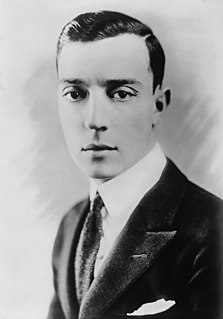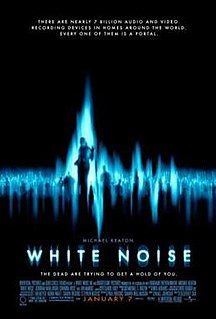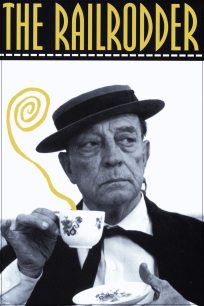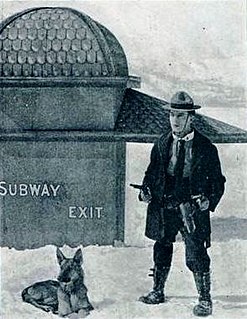
Joseph Frank "Buster" Keaton was an American actor, comedian and filmmaker. He is best known for his silent film work, in which his trademark was physical comedy accompanied by a stoic, deadpan expression that earned him the nickname "The Great Stone Face". Critic Roger Ebert wrote of Keaton's "extraordinary period from 1920 to 1929" when he "worked without interruption" as having made him "the greatest actor-director in the history of the movies". In 1996, Entertainment Weekly recognized Keaton as the seventh-greatest film director, and in 1999 the American Film Institute ranked him as the 21st-greatest male star of classic Hollywood cinema.

The General is a 1926 American silent film released by United Artists. It was inspired by the Great Locomotive Chase, a true story of an event that occurred during the American Civil War. The story was adapted from the 1889 memoir The Great Locomotive Chase by William Pittenger. The film stars Buster Keaton who co-directed it with Clyde Bruckman.

Diane Keaton is an American actress and director. She has received various accolades throughout her career spanning over six decades, including an Academy Award, a British Academy Film Award, two Golden Globe Awards, and the AFI Life Achievement Award.

Michael John Douglas, professionally known as Michael Keaton, is an American actor. He is best known for portraying the DC Comics superhero Bruce Wayne / Batman in the films Batman (1989) and Batman Returns (1992), and is set to reprise the role in the 2023 DC Extended Universe (DCEU) film The Flash. Keaton is also known for his work as Jack Butler in Mr. Mom (1983), Betelgeuse in Beetlejuice (1988), and Adrian Toomes / Vulture in Spider-Man: Homecoming (2017) and Morbius (2022).

A janitor, also known as a custodian, porter, cleanser, cleaner or caretaker is a person who cleans and maintains buildings. Janitors typically earn an average wage of $15 per hour in the United States. That translates to an annual salary of around $35,000 for states that pay janitors the most, such as New York, Massachusetts, and Connecticut. In some cases, they will also carry out maintenance and security duties. A similar position, but usually with more managerial duties and not including cleaning, is occupied by building superintendents in the United States and Canada and by site managers in schools in the United Kingdom. Cleaning is one of the most commonly outsourced services.

White Noise is a 2005 supernatural horror thriller film directed by Geoffrey Sax and starring Michael Keaton. The title refers to electronic voice phenomena (EVP), where voices, which some believe to be from the "other side", can be heard on audio recordings.

The Cameraman is a 1928 American silent comedy film directed by Edward Sedgwick and an uncredited Buster Keaton. The picture stars Keaton and Marceline Day.

The Paleface is a 1922 American silent comedy Western two-reeler film starring Buster Keaton.

The Railrodder is a 1965 short comedy film starring Buster Keaton in one of his final film roles, directed by Gerald Potterton and produced by the National Film Board of Canada (NFB). A 25-minute comedic travelogue of Canada, The Railrodder was also Keaton's final silent film, as the film contains no dialogue and all sound effects are overdubbed.

The Bell Boy is a 1918 American two-reel silent comedy film directed by Roscoe "Fatty" Arbuckle for the Comique film company.

Buster Keaton Rides Again is a 55-minute 1965 documentary film directed by John Spotton and narrated by Michael Kane. The film is a behind-the-scenes documentary shot while Buster Keaton's film The Railrodder (1965), was being produced. Although it is a production documentary, the film is actually longer than The Railrodder, which was only 24 minutes long. Both films were produced by the National Film Board of Canada (NFB). In addition, a French version of Buster Keaton Rides Again, Avec Buster Keaton was released.

The Frozen North is a 1922 American short comedy film directed by and starring Buster Keaton. The film is a parody of early western films, especially those of William S. Hart. The film was written by Keaton and Edward F. Cline. The film runs for around 17 minutes. Sybil Seely and Bonnie Hill co-star in the film.

Allez Oop is a 1934 American short comedy film starring Buster Keaton. It was the second film Keaton made for Educational Pictures.
Eleanor Ruth Keaton was an American dancer and variety show performer. She was an MGM contract dancer in her teens and became the third wife of silent-film comedian Buster Keaton at the age of 21. She is credited with rehabilitating her husband's life and career. The two performed at the Cirque Medrano in Paris and on European tours in the 1950s; she also performed with him on The Buster Keaton Show in the early 1950s. After his death in 1966, she helped ensure Keaton's legacy by giving many interviews to biographers, film historians, and journalists, sharing details from his personal life and career, and also attended film festivals and celebrations honoring Keaton. In her later years, she bred champion St. Bernard dogs, was a gag consultant for Hollywood filmmakers, and was an invited speaker at silent-film screenings.

The Macdonald Block Complex is a set of office buildings in Toronto, Ontario, Canada, that houses 12 cabinet ministers, 15 Ontario government ministries and the largest concentration of Ontario public servants. Its address is 900 Bay Street, and is located just east of Queen's Park.
John Spotton was a Canadian filmmaker with the National Film Board of Canada.

The original World Trade Center (WTC) was a large complex of seven buildings in the Financial District of Lower Manhattan in New York City. It opened on April 4, 1973, and was destroyed in 2001 during the September 11 attacks. At the time of their completion, the Twin Towers—the original 1 World Trade Center at 1,368 feet (417 m); and 2 World Trade Center at 1,362 feet (415.1 m)—were the tallest buildings in the world. Other buildings in the complex included the Marriott World Trade Center, 4 WTC, 5 WTC, 6 WTC, and 7 WTC. The complex contained 13,400,000 square feet (1,240,000 m2) of office space.

The Bois Blanc Island Lighthouse and Blockhouse is a National Historic Site of Canada located in Ontario on Bois Blanc Island, one of the islands in the Detroit River. It consists of a lighthouse, owned by Parks Canada, and a blockhouse, which is privately owned.

Fred Gabourie was a technical director snd department head.
The 18th Canadian Film Awards were held on May 6, 1966 to honour achievements in Canadian film. The ceremony was hosted by Rich Little.
















